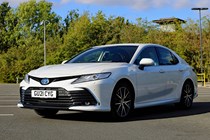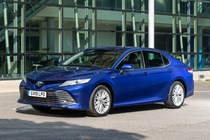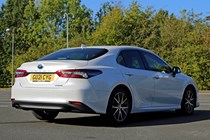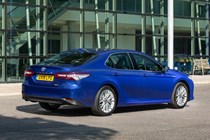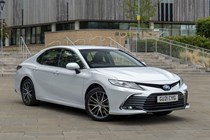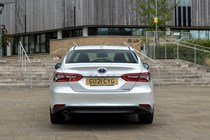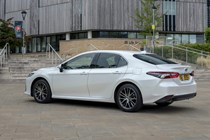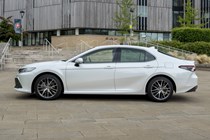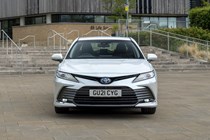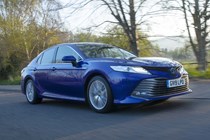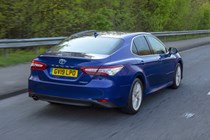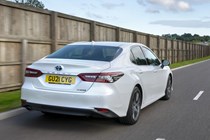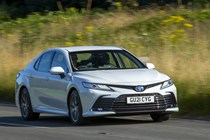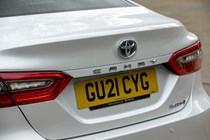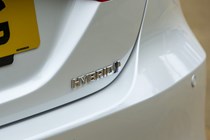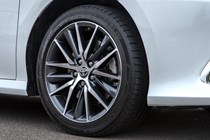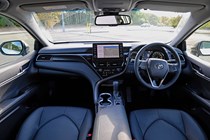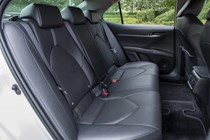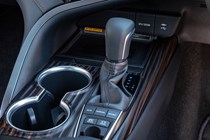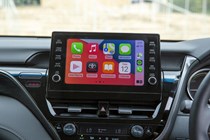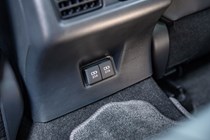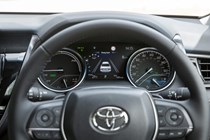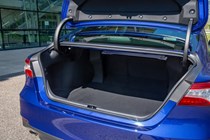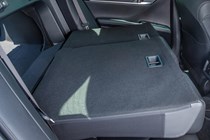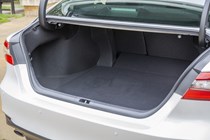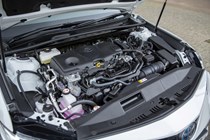
Toyota Camry Saloon (2019-2022) engines, drive and performance
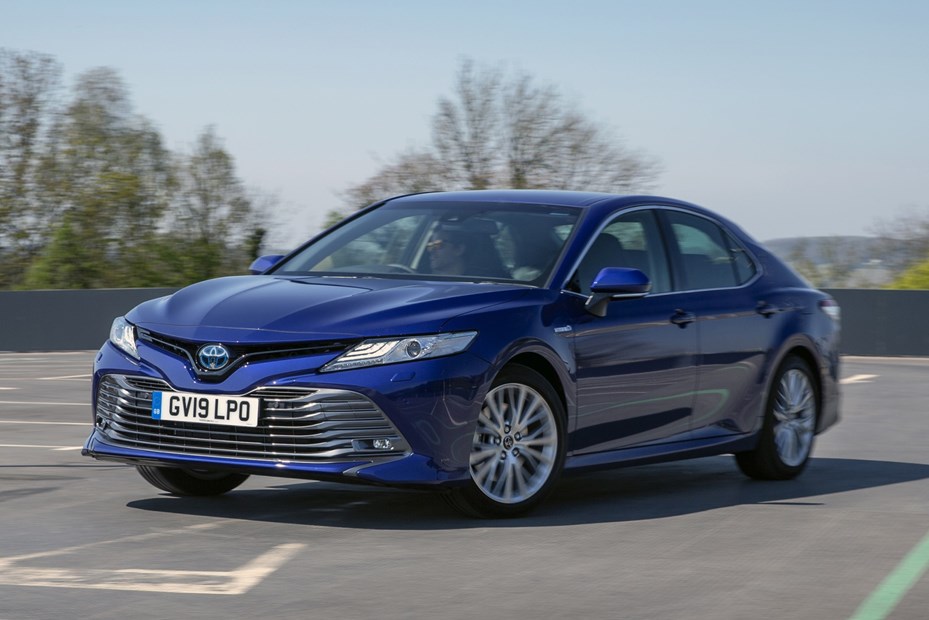
- Smooth acceleration
- Although pressing-on does make the gearbox noisy
- Hybrid system keen to switch to EV mode
What engine options are there?
Petrol-electric hybrid is your only choice. There are two parts to the Camry’s hybrid powertrain: a 2.5-litre, four-cylinder petrol engine and a compact electric motor attached to it – the linked battery pack is housed under the rear seats.
With a precise capacity of 2,487cc it’s on the large side for a system devised with efficiency in mind, but there is solid thinking behind it. By being larger than the norm (2.0-litre) the engine doesn’t have to work as quickly at cruising speeds, boosting economy that way.
It also has strong torque – the pulling power of the engine – figures, making it brisk-ish from standing starts and when accelerating to overtake. This is reflected in the Camry’s 8.3-second 0-62mph time, while its 112mph top speed is capped to preserve efficiency.
So seamless is the package that you’ll not notice the electric motor cutting-in, but you will be aware of when the engine turns off – during moments where you’re essentially coasting (that’s the Auto Glide Control – or AGC) or driving at low speed such as around town – when the Camry kicks into EV (electric vehicle) mode.
Hybrid engine
| Engine | Power and torque |
0-62mph time |
Top speed |
| 2.5-litre | 215hp, 221Nm | 8.3secs | 112mph |

Drive the Camry gently and it goes about its business quietly. In fact, most of the noise you’ll hear at motorway speeds is the roar of the tyres and wind rushing around the tops of the front doors.
Applying full throttle will cause the equilibrium to be disturbed by high engine revs, a symptom of Toyota’s selection of transmission.
Without going into an in-depth technical review, it’s a planetary gearset, which in layman’s terms means that when left to its own devices it works as a single gear that stretches and contracts depending on how much acceleration is being demanded of it.
It is noticeable and it is annoying. If you accelerate hard on a slip road it will produce a nasty racket.
For those who prefer a bit more manual control the engineers have worked six virtual ratios into the system accessed by knocking the gearlever to and fro, but frankly doing so adds little to the driving experience.
Driving modes
Driving modes are commonplace these days, usually giving control over how comfortable or dynamic the experience is. It’s a little different with the Camry.
Normal is the default setting, in which there’s a pre-set balance between performance and efficiency – it’s the setting that best suits the car’s character and encourages you to drive progressively and gently.
While the Camry will automatically default to EV mode whenever the car determines that it’s the most efficient option, you can switch to it manually, effectively forcing it to drive without using the engine until the battery’s resources are diminished. Depending on how quickly you’re driving and what other systems you have running, such as climate control, this could run out after a short distance has been covered.
Sport is your final choice, complete with a subtle red accompanying glow to the instrument binnacle. It makes the Camry perform that bit quicker, with a more responsive throttle and a greater inclination for the transmission to induce much higher revs from the engine. In practice, there’s little discernible performance advantage from using Sport; best to leave it in Normal and leave the Camry to its own devices.
Handling
- Good body control
- Disappointing lack of feedback through the steering wheel
- Camry at its best when driven gently
Comfort was the typical watchword when it came to Camry engineers’ priorities, but for this generation dynamism was reported to have been given much greater importance than before.
On paper the ingredients are largely present and correct: a stiff body structure to allow for greater tuning of the suspension, a development of the Toyota New Global Architecture (TNGA) underpinnings that have won praise in the Corolla, C-HR and Prius, plus racing car-esque double-wishbone rear suspension.
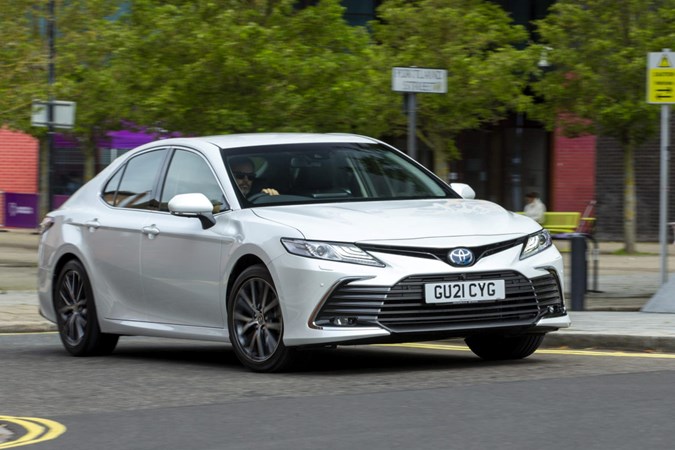
Drive the Camry gently in the manner which suits its hybrid system best and it feels nicely-judged: comfort hasn’t been sacrificed in this bid for something semi-sporty, with neatly controlled bodyroll as you thread the Toyota through a series of sweeping bends. Adhesion through the corners is good, too, but you have to learn to have faith in the steering as there’s precious little feedback about what’s going on. Enthusiastic drivers best look elsewhere.
In reality, the vast majority of buyers who opt for a large four-door saloon from a mainstream manufacturer aren’t looking for the last word in driver enjoyment, even if you merely see driving as a function from getting from A to B, all will appreciate its well-judged body control and pliant ride quality.


